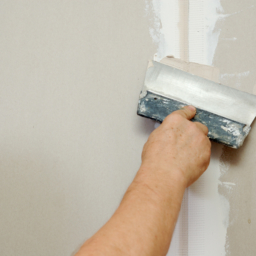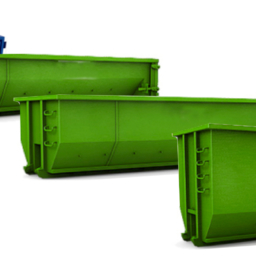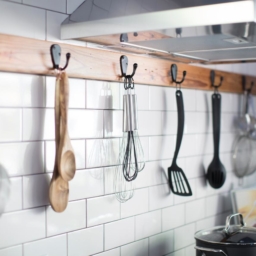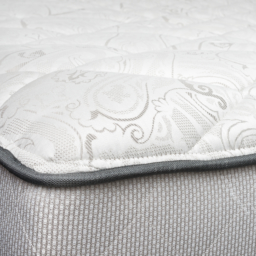Steps to Take After Your Basement Has Flooded
A frustrating sight; you come home, or have been woken up to find a flooded basement. You have to act fast to limit the damage, so what do you do? If there is currently water coming into your basement, you’ll need to exercise extreme caution before taking any action.
Follow these steps to keep your family safe and prevent further damage to your home:
What to Do if Your Basement is Flooding
Step 1: Make Sure Your Basement is Safe to Enter
The first step during a basement flood is to assess how dangerous the situation is. If there is standing water in your basement, that means there is also a risk of electrical shock (if the water is high enough to come in contact with an electrical outlet or wiring). If you can’t see, but believe an outlet is underwater, do not enter the basement.
To see if your flooded basement is safe to enter, check:
- Water Depth: If the water is more than 2 inches deep throughout your entire basement, do not step into the water, as you could get shocked. Call in a professional to pump the water out as soon as possible. If your main electrical service panel is accessible without entering the basement, turn off power to the basement. If not, contact a licensed electrician to shut off the power.
- Submerged Appliances: If the water level in your flooded basement is approaching any gas-fired appliances, like your furnace or water heater, call the gas company and have them shut off the gas. Your pilot light could be out, and gas could be entering your basement. If you smell gas, exit the building immediately and contact your fire department.
All remaining steps assume that the water in your basement is shallow enough to move through it safely
Step 2: Determine Why Your Basement is Flooding
The next step is to determine why your basement has flooded, if you can see it stop it as quickly as possible. If you can’t stop the flooding, try to figure out where the water is coming from so you can inform your contractor or plumber.
Scan your basement and try to pinpoint how the water is getting in. If water is coming into your basement through:
- Walls, Floor, Foundation or Windows: This is likely the result of heavy rains and/or a too-high water table. You may have to wait for the weather to change before the water stops rising. If water depth allows for safety, shut off power to the basement in case the water continues to rise, and then start moving your belongings to higher ground.
- Floor Drain: This usually indicates that there’s a problem with your sump pump or home drainage system, or that there’s a backup in the city sewer lines. Your next step should be to find a plumber and get them on-site. If the issue is determined to be caused by the municipal sewer system, call your city’s water and sewage department and notify them.
- Plumbing or Appliances: Are your pipes or the hoses connected to your washer or water heater spewing water? If so, you’ve found your culprit. Immediately shut off water to the broken fixture. If you think broken plumbing is the source of the problem, but can’t determine which fixture is broken, shut off water to the entire house.
Once you’ve determined the source of the flooding, and possibly stopped the leak, you can move on to saving items from the flooded basement.
Step 3: Begin Saving Your Belongings
Before you start diving in to save your belongings, put on rubber boots and gloves. Move fast and unplug any and all electronic devices. This is a very important safety measure to follow, especially if the water continues to rise.
Once you’ve unplugged everything, start moving your belongings to higher ground. You won’t be able to move everything out of the basement, so prioritizing is key.
Prioritize items that will be the most expensive or hardest to replace:
- Important Documents: Titles, deeds, passports and financial records.
- Family Keepsakes: Heirlooms, photo albums, books and souvenirs.
- Electronics: TVs, desktop computers, laptops and other portable electronics.
Finally, work on getting as many of the remaining items as possible to higher ground, or at least stored somewhere higher in your basement.
Step 4: Remove Any Standing Water
The faster you can start drying your basement after a flood, the less you have to worry about any long-term damage to your home. If the standing water in your basement is relatively shallow, get to work with mops and buckets.
If the water is several inches deep, you have a few options:
- A Submersible Pump: You can rent or buy pumps at hardware or pool supply stores.
- A Wet/Dry Vac: A wet/dry vac might be a better option if you already own one or if only a small area of your basement has deep standing water.
Keep in mind, your basement will still be damp once the standing water is gone. To help speed up the drying process:
- Open any basement windows (if the weather permits) to help the moisture escape.
- Set up fans throughout your basement and turn them on high to speed up evaporation. Position them so they’re blowing out of the basement, whether through windows or toward the stairs.
- Set up space heaters throughout the basement to help evaporate the water faster. Note that this will result in a humid basement environment. It’s best to combine this approach with the use of a dehumidifier or two.
Step 5: Start the Cleanup
First, get rid of any ruined belongings. You should not attempt to save:
- Electronics that came in contact with the water.
- Fabric items that are not washed and dried within 48 hours.
- Rugs, carpeting and drywall that have been submerged in flood water.
- Upholstered furniture, unless cleaned by an expert.
Next, use warm water and bleach or a cleaning product with a disinfectant to thoroughly clean the walls and floors and any furniture that came in contact with the flood water. Let dry and repeat. Wipe down all exposed areas with a mold control product or make plans to have a restoration specialist visit your home to prevent a mold infestation.
After completing these steps you should be on your way to a dry basement. If you have a lot damaged items that need to be thrown away consider renting a dumpster to dispose of your waste. Once the process is complete, be sure to contact your insurance company, and professionals who can prevent your basement from flooding again in the future.















